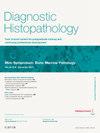The use of artificial intelligence in bladder cancer: a histopathologic perspective
引用次数: 0
Abstract
Artificial Intelligence has shown promising results in the context of cancer diagnostics, especially due to the advancements in Digital and Computational Pathology. With regards to Bladder Cancer, AI Systems have shown to be capable of solving complex problems such as cancer detection, tumor grading, detection of lymph node metastasis or even the prediction of lymph node or mutation status (e.g. FGFR3) based solely on Hematoxylin & Eosin morphology. Furthermore, AI systems can aid pathologists by autonomously generating synoptic reports from Whole Slide Images. Against this backdrop, this review aims to provide a high level, yet comprehensive overview on the latest advancements of AI in bladder cancer, from a histopathological perspective, while discussing the current challenges in this field. In line with this scope, while highly interesting, applications of AI in the context of cystoscopy, cytology, immunohistochemistry, radiology and bioinformatics will not be discussed.
人工智能在膀胱癌中的应用:组织病理学视角
人工智能在癌症诊断方面已经显示出有希望的结果,特别是由于数字和计算病理学的进步。在膀胱癌方面,人工智能系统已经显示出能够解决复杂的问题,如癌症检测、肿瘤分级、淋巴结转移检测,甚至仅基于苏木精预测淋巴结或突变状态(例如FGFR3);曙红形态。此外,人工智能系统可以通过从整个幻灯片图像中自动生成概要报告来帮助病理学家。在此背景下,本文旨在从组织病理学角度对人工智能在膀胱癌中的最新进展进行高水平、全面的综述,同时讨论该领域目前面临的挑战。与此范围一致,虽然非常有趣,但AI在膀胱镜检查、细胞学、免疫组织化学、放射学和生物信息学方面的应用将不会被讨论。
本文章由计算机程序翻译,如有差异,请以英文原文为准。
求助全文
约1分钟内获得全文
求助全文
来源期刊

Diagnostic Histopathology
Medicine-Pathology and Forensic Medicine
CiteScore
1.30
自引率
0.00%
发文量
64
期刊介绍:
This monthly review journal aims to provide the practising diagnostic pathologist and trainee pathologist with up-to-date reviews on histopathology and cytology and related technical advances. Each issue contains invited articles on a variety of topics from experts in the field and includes a mini-symposium exploring one subject in greater depth. Articles consist of system-based, disease-based reviews and advances in technology. They update the readers on day-to-day diagnostic work and keep them informed of important new developments. An additional feature is the short section devoted to hypotheses; these have been refereed. There is also a correspondence section.
 求助内容:
求助内容: 应助结果提醒方式:
应助结果提醒方式:


